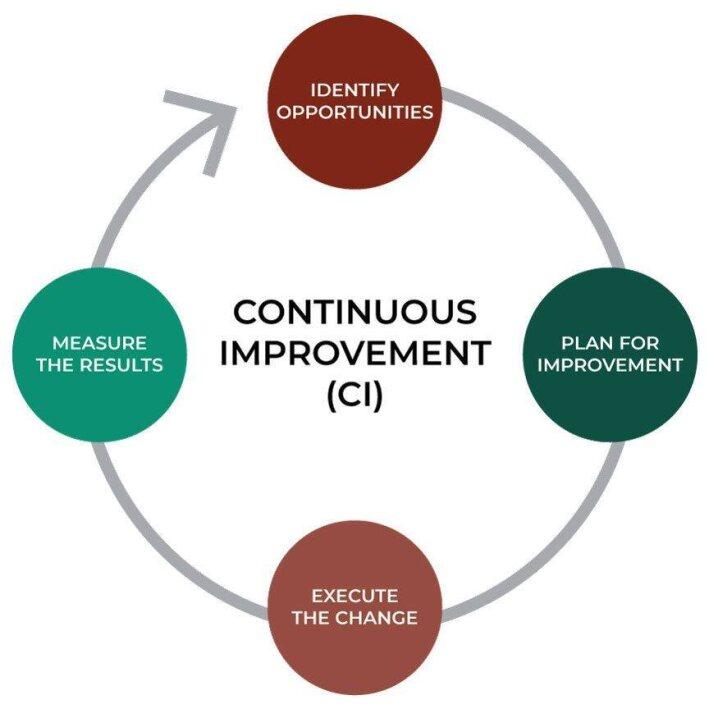Unlock your full potential through incremental changes with continuous improvement process

Continuous improvement (CI) is an ongoing effort to enhance products, services, processes, or systems. It involves regularly identifying areas of improvement, implementing changes, and monitoring results to ensure positive outcomes. Rooted in methodologies like Kaizen, Lean, and Six Sigma, continuous improvement encourages a proactive approach to identifying inefficiencies, analyzing their causes, and implementing practical solutions. Regular improvements also help businesses better manage risk, and comply with regulations. Without a structured approach to improvement, businesses may stagnate, fall behind competitors, or fail to meet evolving customer demands. In essence, a continual improvement process ensures that organizations can maintain high levels of performance and deliver consistent value to their customers.
Continuous improvement process (CIP) focuses on making small, manageable improvements over time rather than drastic overhauls. It relies on regular feedback, data analysis, and performance reviews to identify opportunities for enhancement. It provides a structured approach to enhance an organization’s processes, products, or services on an ongoing basis. It is designed to identify inefficiencies, resolve them, and foster a culture of improvement. This process is iterative and cyclic, ensuring that enhancements are part of regular operations rather than isolated project. Group50 consulting firm’s continuous improvement process program is guided by our change management framework called the Business Hierarchy of Needs ® which outlines the considerations for creating sustainable change in the business.
The sequence Group50® follows for its continual improvement process typically consists of these elements. Identifying Continuous Improvement projects that support the company’s Most Important Goal (MIG) and strategies. Assessing Continuous Improvement Maturity to understand the appropriate approach to selected projects. Creating project charters to support each project which includes defining the appropriate methods, tools, and training. Creating an implementation plan that satisfies the company’s unique Business Hierarchy of Needs® Designing the management review process
Group50’s Continuous Improvement consultants know when to use tools such as Value Stream Mapping, Statistical Process Control, Six Sigma, 5S, Kaizen, and others for the purposes of redesigning workflows and measuring performance. The consultants work closely with senior leadership to design the Continuous Improvement process program. It takes planning, alignment, training, time, and patience. These five elements are part of an effective change management plan. They must be done in the proper sequence, support the strategic objectives of the company and they require the commitment of senior leadership. Group50’s Process Improvement Consultants understand the process for developing and sustaining a Continuous Improvement program as a result of implementing them in large and small companies, and every functional area in a business: Marketing, Engineering, Manufacturing, Purchasing, Distribution, and Finance. In order to help clients understand the Continuous Improvement Process, and to help them assess where their current programs stand, we have created a series of assessments and workshops: Creating the Business Case for Continuous Improvement
Implementing a Successful Continuous Improvement Program
Continuous Improvement Process Assessment
Sustaining a Continuous Improvement Program By continually identifying and addressing pain points, organizations can consistently deliver better products or services. By consistently identifying and addressing inefficiencies, continual improvement process fosters ongoing growth and optimization. The continuous improvement process cultivates a culture of innovation, collaboration, and accountability within the organization. Employees are encouraged to contribute ideas, identify problems, and participate in refining processes, which leads to higher engagement and morale.
Post Your Ad Here
Comments